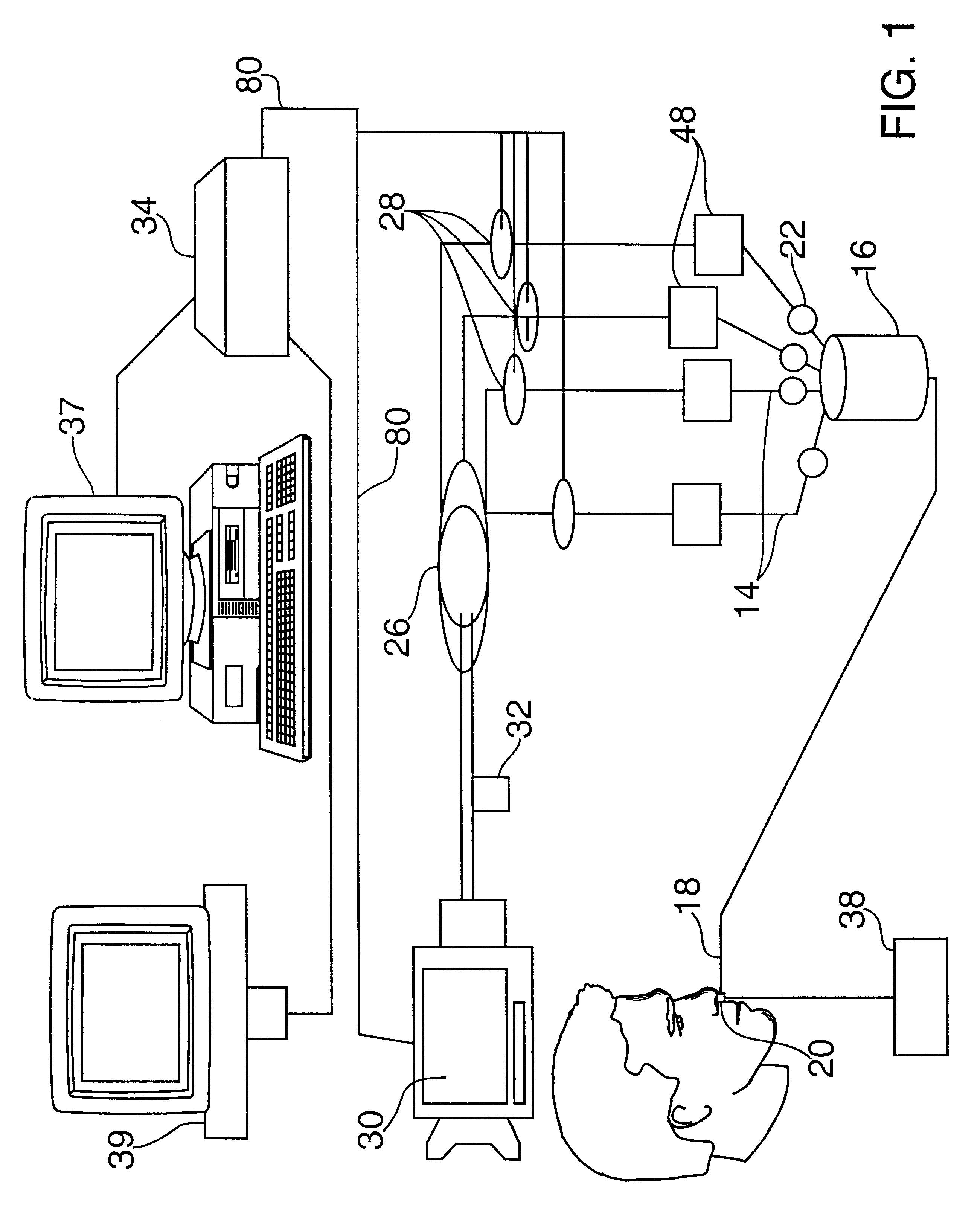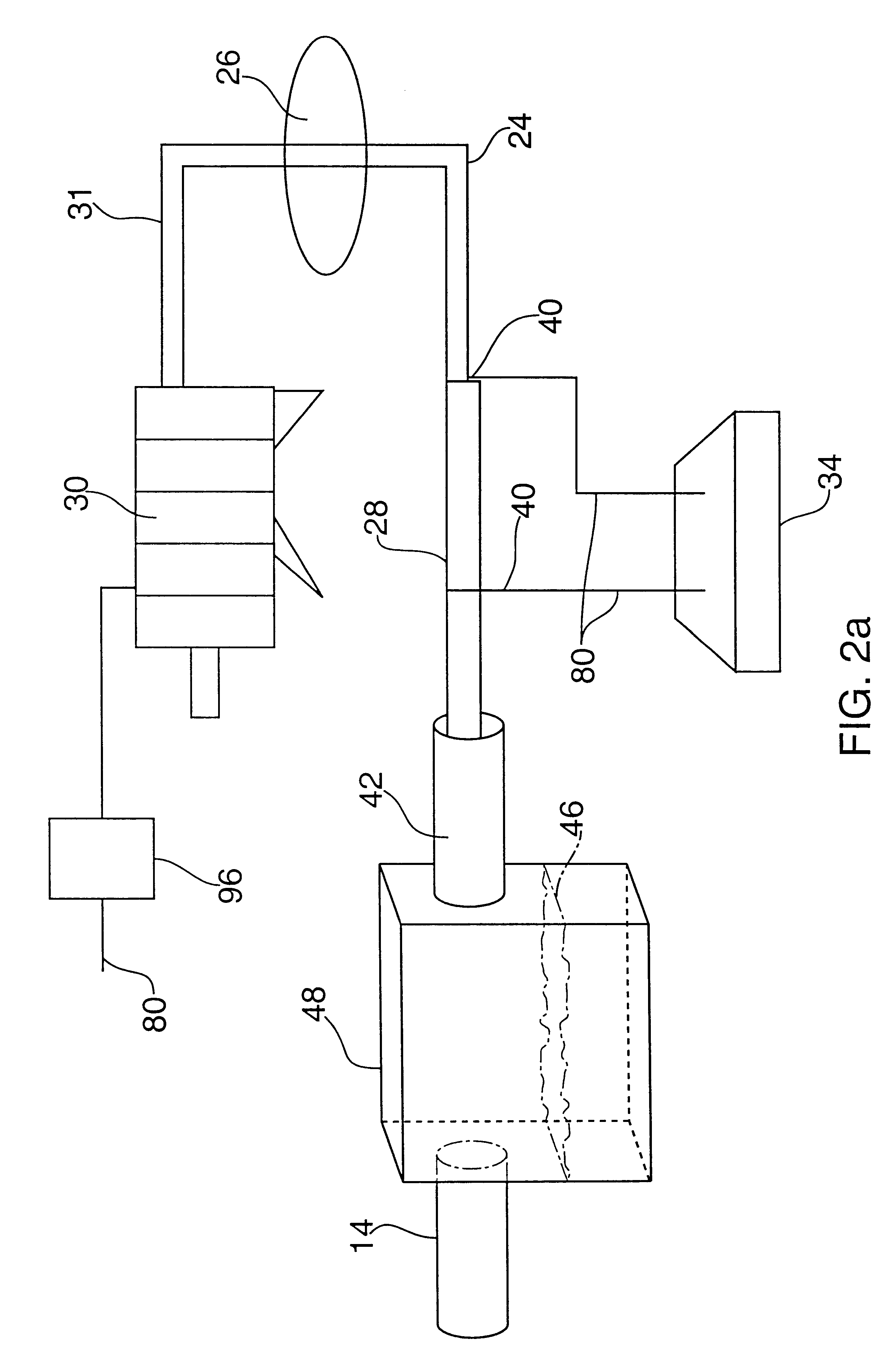Dynamic alloy wire valve for a multimedia linked scent delivery system
a technology of dynamic wire valve and multimedia link, which is applied in the direction of valve operating means/release devices, transportation and packaging, machines/engines, etc., can solve the problems of slow open air diffusion and convection, no prior invention can achieve, and the rate of scent change can be very rapid
- Summary
- Abstract
- Description
- Claims
- Application Information
AI Technical Summary
Benefits of technology
Problems solved by technology
Method used
Image
Examples
example ii
This will illustrate the calculation of the concentration scent molecule A in the laminar gas stream passing over the liquid fragrance in the fragrance container. As described in the preceding section the solution is achieved by applying equation 9 iteratively over the full height of the fragrance container. Program II which was just listed will execute these steps.
Consider the fragrance container described in FIG. 3a. The container is 3 cm in height 1.5 cm wide and 6 cm long. The bottom 1 cm of the vertical height of the container is filled with the liquid fragrance. Therefore the area in which the air picks up the scent is 1.5 cm by 6 cm. We will consider the same example as discussed for turbulent flow. That is pure n-pentane in liquid phase evaporating into and diffusing into the fresh air stream.
The values of the relevant constants are:
Dab=0.0872 cm.sup.2 / sec
.rho. / .mu.=6.729 sec / cm.sup.2 (10)
v.sub.max =16.5 cm / sec
Let the value of z be 5 cm. That is we are looking at the cross ...
example iv
In this example a sample calculation of flow through a tee will be demonstrated. The method of solution will be to solve equation 21 for V1. The term Vm is predetermined for the calculated flow through the entire system. This was shown earlier. The nasal tubing makes little contribution to the overall resistance of the system and thus the net flow rate. However the contribution of the tee could be calculated if desired.
The term V2 can be written in terms of V1. That is V2=Vm-V1. In addition the loss coefficients can be written as known constants divided by the respective velocity terms through the different limbs of the tee, Thus equation 21 can be written so that the only unknown in the equation is V1. Given its form however it is hard to solve this equation empirically. Therefore the solution is found by a numerical iterative solution starting with small values of V1 and iteratively increasing the value of V1 until convergence occurs. A computer program to produce this solution is...
PUM
| Property | Measurement | Unit |
|---|---|---|
| pressures | aaaaa | aaaaa |
| diameters | aaaaa | aaaaa |
| diameter | aaaaa | aaaaa |
Abstract
Description
Claims
Application Information
 Login to View More
Login to View More - R&D
- Intellectual Property
- Life Sciences
- Materials
- Tech Scout
- Unparalleled Data Quality
- Higher Quality Content
- 60% Fewer Hallucinations
Browse by: Latest US Patents, China's latest patents, Technical Efficacy Thesaurus, Application Domain, Technology Topic, Popular Technical Reports.
© 2025 PatSnap. All rights reserved.Legal|Privacy policy|Modern Slavery Act Transparency Statement|Sitemap|About US| Contact US: help@patsnap.com



